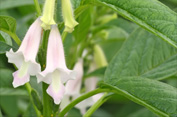Herbal Treatment of Oligomenorrhea with Sesamum indicum L.: A Randomized Controlled Trial
DOI:
https://doi.org/10.31661/gmj.v5i3.613Keywords:
Oligomenorrhea, Sesamum indicum, Progesterone, MenstruationAbstract
Background: Oligomenorrhea (defined as infrequent menstrual flow at intervals of 36 days to 6 months or 5–7 cycles in a year) is mostly managed with hormone therapy; however, there is an increasing demand for alternative medicine treatments in this field. This study is designed to evaluate the efficacy of Sesamum indicum L. in inducing menstrual bleeding in women with oligomenorrhea. Materials and Methods: A single-blind clinical trial was performed on 56 cases of oligomenorrhea, admitted to Beheshti hospital clinic. Patients randomly received treatment for a week either in the sesame or progesterone group and then were followed for 8 weeks. Menstrual bleeding occurrence, waiting period, volume of blood flow, severity of pain, uterus temperament, menstruation in the next episode and side effects were assessed by interview. Results: Twenty-seven patients (mean age 29.42 ± 8.99 years) and 29 patients (mean age 26.63±5.63 years) were enrolled in the sesame and progesterone groups, respectively. Seventy and two percent and 93.10% of the patients in the sesame and progesterone groups experienced menstrual bleeding (P=0.012) on an average of 10.38 and 11.88 days (P>0.05) respectively. Volume of blood flow and severity of pain were not increased in both groups. Fifty percent and 6% of the patients in the sesame and progesterone groups experienced on-time menstruation in the next (drug-free) episode of menstruation, respectively (P= 0.016).Conclusion: Although the rate of bleeding following sesame consumption was lower than progesterone-treated group, it seems that the response rate is high enough to suggest more assessments in the future; moreover, in the sesame group, the rate of menstruation in the next drug-free episode was significantly higher than the progesterone group. Therefore, sesame, as a well-tolerated, partially effective choice in inducing and maintaining regular bleeding, could be considered in the patients who are not suitable candidates for hormone therapy.[GMJ.2016;5(3):114-121]








